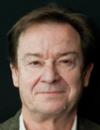Prof. Dr. Rodolfo Miranda Soriano
Rodolfo Miranda got his Ph.D in Physics from the Universidad Autónoma de Madrid (UAM) in 1981 for a work on the role of defects on surfaces under the supervision of Prof. J.M. Rojo. He worked in Munich and Berlin with Gerhard Ertl (NL in Chemistry 2007), before being appointed Full Professor of Condensed Matter Physics at the UAM in 1990. Prof. Miranda has been Vice-chancellor of Research and Scientific Policy (1998-2002) of the UAM, Executive Secretary of the R+D Commission of the Conference of Rectors of Spanish Universities (CRUE) (2000-2002) and Director of the Materials Science Institute “Nicolas Cabrera”. He has served on Advisory Committees for different institutions, such as the Surface Science Division of IUVSTA, the Max Planck Institute fur Mikrostruktur Physik or the European Synchrotron Radiation Facility (ESRF). Prof. Miranda is Fellow of the American Physical Society since 2007, Head of the Surface Science Lab of the UAM (LASUAM) and Director of the Madrid Institute for Advanced Studies in Nanoscience (IMDEA-Nanociencia) from February 2007.
Prof. Miranda’s research interests range from low dimensional magnetism or molecular self-organization on surfaces to the mechanisms of epitaxial growth, the growth and properties of graphene or the use of magnetic nanoparticles in nanomedicine. Together with his collaborators, has developed instruments to perform Scanning Tunnelling Microscopy (STM), Helium Atom Scattering (HAS) or Angular Resolved Photoemission (ARUPS) in Ultra High Vacuum conditions. Professor Miranda has authored and coauthored more than 270 scientific publications, which have received nearly 10.000 citations. He has supervised more than 40 PhDs and postdoctoral researchers.





